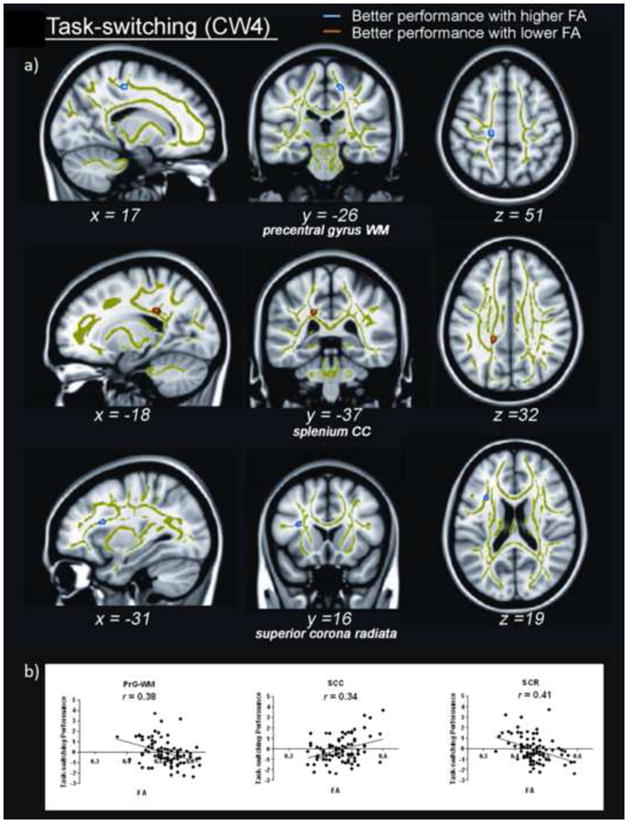Figure 2.

White matter regions demonstrating an association between fractional anisotropy (FA) and task-switching performance. A) Top: Higher FA in precentral gyrus white matter (PrG-WM) was associated with better task-switching, shown in blue (52 voxels). Middle: Higher FA in the splenium of the corpus callosum (SCC) was associated with worse task-switching, shown in red (48 voxels). Bottom: Higher FA in superior corona radiata (SCR) was associated with better task-switching, shown in blue (38 voxels). Clusters are overlaid on mean white matter skeleton, shown in green. Clusters are significant at a voxel-wise p < 0.01 and clusterwise α < 0.01, corrected for multiple comparisons. Coordinates are presented in MNI space. B) Graphs showing the correlation between FA and task-switching. Left: Correlation between higher FA in PrG-WM and better task-switching. Middle: Correlation between lower FA in the SCC and better task-switching. Right: Correlation between higher FA in the SCR and better task-switching. Lower task-switching scores represent better performance. L = left, R = right.
